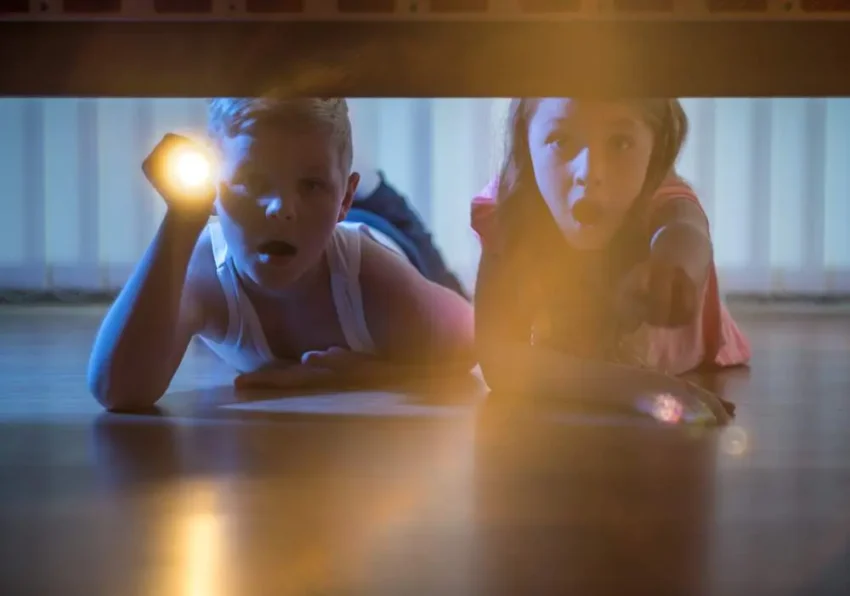
How To Write A Ghost Hunt Report
Ghost hunt reports help paranormal researchers learn about evidence collected at a haunted place. It also builds knowledge about ghost hunting techniques and experiments. Learn how to write a comprehensive report and see our examples.
Writing Responsibilities
The first question I get is, “Who will write the report?” I say the Lead Investigator has to write it, but any investigator could and should be able to write one. The Lead Investigator is in charge of the ghost hunt and they should decide what gets reported out to the clients, the team and the public.
Writing Style
First, don’t worry about grammar. As long as you’re understood and present the info in a clear and concise way, I wouldn’t worry about trying to sound like a scientist or technical writer. Simply answer these questions:
Who?
This means which investigators investigated the haunt; who conducted experiments; who analyzed the data/evidence; who was affected by the entity (if you have permission to release client names)
What?
This means what did you experience or what kind of evidence did you collect.
When?
This means at what time did you collect the evidence or experience something.
Where?
If possible, state the location of the haunted place and any rooms or areas. Other investigators will want to go there and try to re-create your experiments.
Why?
In your opinion, why did you get the evidence and experience something. This can merge with the next question, how.
How?
Tell the readers how to you conducted the experiment; gathered evidence; or, how it felt when you had an experience. This is important to help other investigators conduct experiments.
Impact or What’s Next
This means what does all of this information mean to readers or other ghost hunters. Should other investigators come out? Is it a hoax? Do you need more evidence to make a conclusion? If so, say so.
Writing The Report
The simplest way to write a ghost hunt report is to use chronology. That just means start at the beginning and write every phase of the investigation until the end. We wrote our Port Gamble ghost hunt in this style. You want to be particular about the time, though. It’s very important to make sure you insert the evidence in the order it happened. This gives context to what you recorded or experienced. Reporting the time helps with that. Other investigators will read this order and try to re-create it when you collected the evidence or had the experience. This helps confirm patterns to hauntings or debunk the activity.
If you investigated in a larger group and went to different areas, it’s okay to break the report into mini-investigations. That just means if you were in an old reform school, you could collect everyone’s notes to write separate sections about the basement, kitchen, attic, clinic, etc. Stick to the chronology, though. We wrote our Congress Plaza Hotel investigation with this technique. You’ll see it’s broken out by each floor or each witness we spoke to.
If you didn’t get any evidence on a hunt, you should still write a report. You wouldn’t need to go into much of the details. In this case, I’d state the aim of the ghost hunt, what kind of equipment used, any experiments and some haunted history of the location, then end it.
Elements Of A Ghost Hunt Report
Each report should contain data about the environment and your equipment list with the chronological narrative. I tend to include a conclusion at the end. People like closure on an investigation, which a conclusion provides. You don’t need to explain why you picked the equipment when you list it because you’ll write about how you used the equipment in the narrative.
Below is a list of environment factors to note in your report:
- Solar X-Ray Activity
- Geomagnetic Field
- Moon Phase
- Temperature
- Humidity
- Barometric Pressure
- Wind Speed & Direction
These factors matter because there is a theory that solar activity, moon phase and magnetic storms help ghosts manifest. If you list it, then other researchers can compare their hunt conditions with yours and see if a pattern forms around the environment. Temperature, humidity, barometric pressure and wind speed are other data points for comparison. If you’re indoors, you can skip wind speed.
You can find most this info by searching Bing or Google for it and using the date. Really, the date matters in your search query. Otherwise, you could get an old data set.
You can use our Suicide Bridge (Pasadena, CA) ghost hunt report as an example.
Publishing A Ghost Hunt Report
Publishing your ghost hunting report depends on the permission you received from your client. If you have a private residence, I wouldn’t put the report online unless you have permission. Some clients let you publish as long as you don’t list their names or address. Remember, no one wants an army of ghost hunters descending on their house, so use common sense. Ghostly Activities masks the names and locations before we publish a report about a private residence.
Some paranormal teams keep their reports internal, which is a bit of a shame. Our goal as researchers is the prove the existence of ghosts and that’s hard to do if you can’t compare notes with other researchers. Ghostly Activities shares its data, files and reports with our ghost hunting partners right after an investigation.
If you have a public location, like a state park, museum, school, etc., then you are free to publish your findings. Most businesses like their investigations published because it could lead to more business and/or publicity. This is especially true of hotels, bed ‘n breakfasts, and pretty much any place that could profit from a haunting. I always take a business request for an investigation with major reservations.
Ghostly Activities prefers to publish reports online. It’s just easier to share your findings. If you need to keep it private, then convert your Word file to a PDF. Then you can email it or put it on a thumb drive to share it. You can put links to files in a PDF, so people can get the raw data or evidence file to review.
General Report Guidelines
- Keep it simple
- Put your evidence in context so readers understand your experiences or experiments
- Use video for web reports (if available)
- Always have backups of your original audio, image and video files to share
- Answer questions about the investigation within a day or two
- Don’t sweat the grammar
Do you have any types or additional things you add to your ghost hunt reports? If so, leave a comment with the details.
Thanks for reading Ghostly Activities. Much appreciated. Take care!
